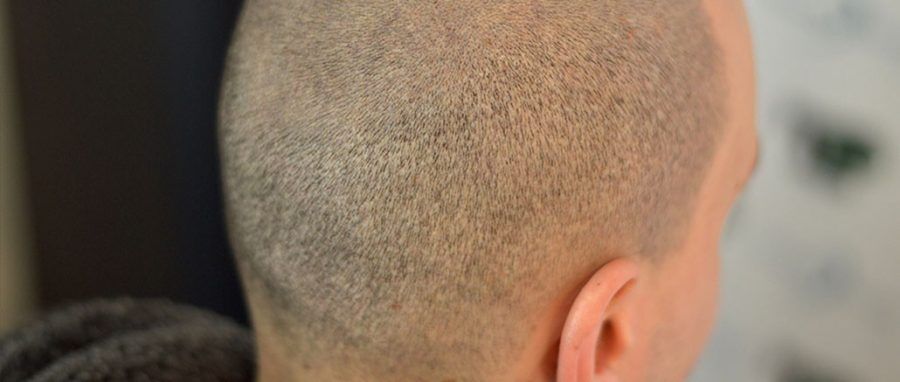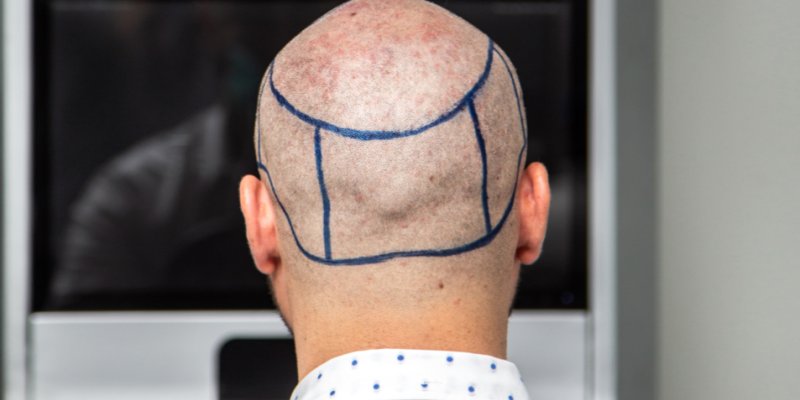What To Do When You Don’t Have Enough Donor Area for Hair Transplant: Alternative Solutions Explored
Are you worried about not having enough donor area for a hair transplant? Many people don’t realize that there are alternative solutions to the problem. Read on to explore what those solutions are, and how they can help you get the results of a hair transplant without having to worry about donor area.
What is a Hair Transplant?
When it comes to hair transplants, there is no one-size-fits-all solution. The best way to determine which option is right for you is to consult with a hair transplant specialist. They will be able to assess your individual case and offer the best course of treatment.
One alternative solution for those who don’t have enough donor area for a hair transplant is a scalp micropigmentation (SMP) procedure. This involves tattooing pigment onto the scalp to create the appearance of thicker, fuller hair. It is a non-invasive procedure with little downtime, and can be an effective way to camouflage thinning or balding areas.
Another option is platelet-rich plasma (PRP) therapy. This treatment uses your own blood plasma, which is injected into the scalp to stimulate new hair growth. PRP therapy is still considered experimental, but some studies have shown promising results.
If you are not a good candidate for either of these alternative solutions, you may still be able to undergo a traditional hair transplant procedure using artificial hair fibers or donor tissue from another part of your body. These options are typically less successful than transplanting real hair follicles, but may be worth considering if you are desperate for results and have exhausted all other options.
Why Donor Area is Important for Hair Transplant?
When considering a hair transplant, the donor area is an important factor to take into account. This is because the donor area is where the hair follicles for the transplant will be taken from. If you do not have enough donor area, it may not be possible to get the results you want from a hair transplant.
There are alternative solutions that can be explored if you do not have enough donor area. One option is to use artificial hair. This option can give you the look you want but it is not a permanent solution. Another option is to get a scalp reduction. This procedure removes some of the skin on your head so that your existing hair can be redistributed over a larger surface area.
If you are considering a hair transplant, make sure to speak with a doctor about your options and what would be best for you.
What To Do When You Don’t Have Enough Donor Area for Hair Transplant?
When you don’t have enough donor area for hair transplant, there are alternative solutions that can be explored. One option is to use a lower density of grafts. This will require more sessions but will result in a more natural-looking outcome. Another option is to use artificial hair, which can be matched to your existing hair color and texture. This option is not as permanent as a real hair transplant, but it can give you the desired results until you have enough donor area for a real transplant.
Alternative Solutions Explored
When it comes to hair transplants, the donor area is crucial. This is the area from which the follicles are taken and transplanted to the balding or thinning areas. If you don’t have enough donor area, it can seem like there’s no hope for a full, healthy head of hair.
But don’t despair! There are alternative solutions that can help you achieve the results you want. Here are some of the most popular options:
- Scalp micropigmentation: This technique uses pigment to create the illusion of fuller, thicker hair. It can be an excellent option for those with very limited donor areas.
- Hair implants: This method involves taking follicles from other parts of the body (usually the back or sides) and transplanting them to the scalp. While this can be effective, it’s important to note that it’s a more invasive procedure than scalp micropigmentation and may not be suitable for everyone.
- Hairpiece: A hairpiece (or wig) can be a good option if you want to cover up a large bald spot or if you have very limited donor area. There are many different types and styles available, so you’re sure to find one that looks natural and suits your needs.
- Topical treatments: There are various topical treatments available that can help to thicken and strengthen existing hair. These include minoxidil ( Rogaine) and finasteride
Pros and Cons of Each Solution
When it comes to hair transplantation, the donor area is the key. This is the part of your scalp from which healthy hairs will be harvested and transplanted to the balding or thinning areas. If you don’t have enough donor area, then you may not be a good candidate for hair transplant surgery.
But all is not lost. There are alternative solutions that can give you the results you want, even if you don’t have enough donor area for a traditional hair transplant. Let’s take a look at some of these alternatives and explore their pros and cons.
Hair Transplant Alternatives:
Scalp Micropigmentation: Scalp micropigmentation (SMP) is a non-surgical procedure that involves tattooing pigment onto the scalp to create the appearance of thicker, fuller hair. It can be an effective solution for those with limited donor area because it doesn’t require taking any hairs from elsewhere on the body.
Pros: SMP is less expensive than traditional hair transplant surgery and has a shorter recovery time. It can also be used to camouflage scars from previous surgeries.
Cons: The results of SMP are not permanent and will need to be refreshed every few years as the pigment fades. There is also a risk of infection and allergic reaction with any tattooing procedure. And because SMP only creates an illusion of thicker hair, it won’t actually increase your Hair Mass Index (HMI).
Final Thoughts
When it comes to hair loss, there are a lot of different factors that can contribute. And, as we age, our hair follicles can become less and less productive. This is why hair transplant surgery is becoming more popular among those with genetic hair loss. However, not everyone is a candidate for this type of surgery. If you don’t have enough donor area for a hair transplant, you may be wondering what your options are.
In this blog post, we’ll explore some of the alternative solutions for those who don’t have enough donor area for a hair transplant. We’ll discuss things like scalp micropigmentation, PRP therapy, and more. So if you’re looking for ways to combat hair loss without surgery, read on!



